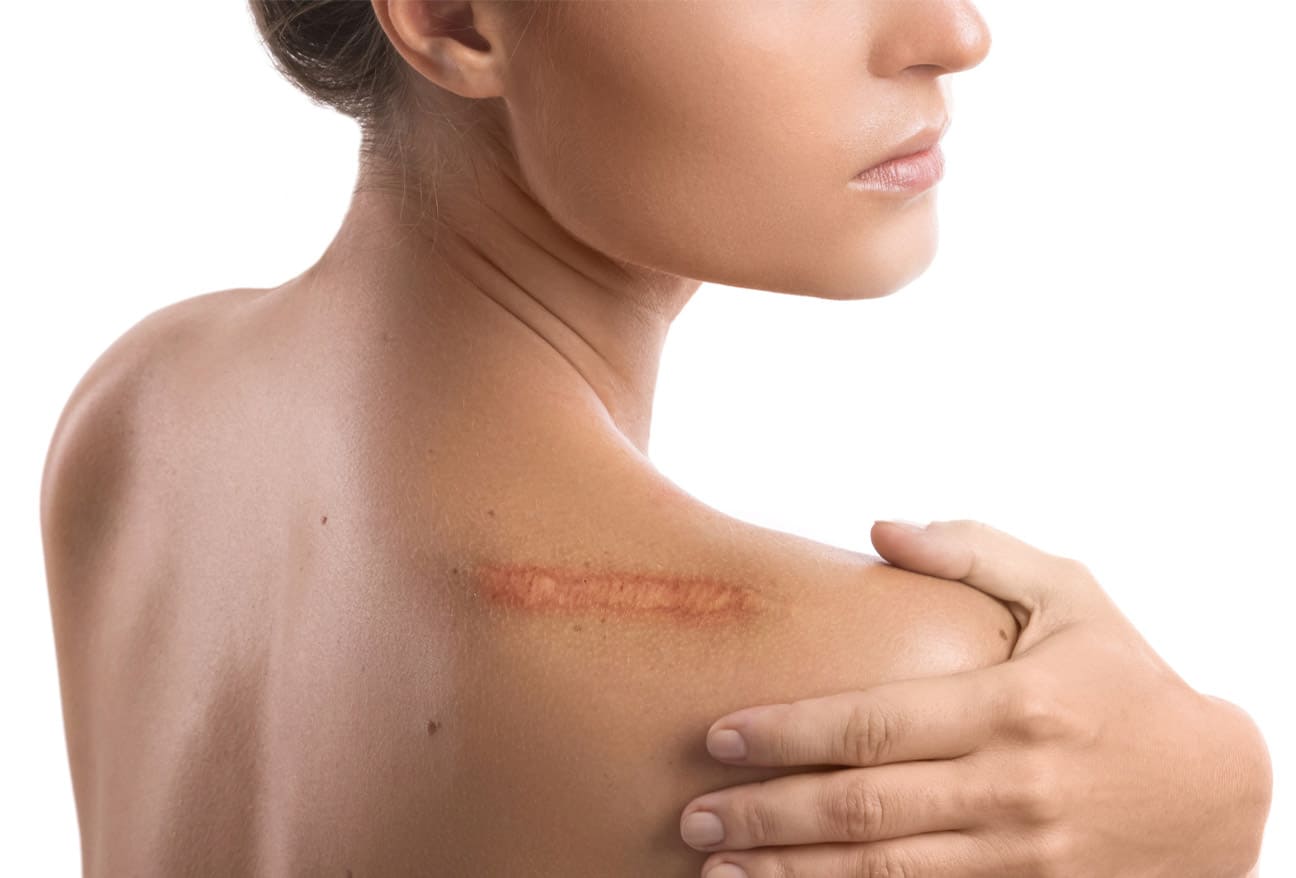-
 mederma@winmedicare.com
mederma@winmedicare.com
- No.1 Dermatologist Recommended Scar Brand
-
 Login
Login

Scars are a very natural part of the body’s healing process after an injury. However, not all scars are the same, and understanding the differences between various types is important for effective treatment.
Two common types of scars that often cause confusion are keloid and hypertrophic scars, and differentiating between these two is essential because their treatments vary significantly.
What is a Keloid Scar?
Keloid scars occur when the skin’s healing process goes into overdrive. Whenever the skin is injured, the body produces collagen to repair the damage. In the case of keloids, the body continues to produce collagen even after the wound has healed, resulting in a raised, thick scar that extends beyond the original wound’s boundaries.
Keloids can form anywhere on the body but are most common on the chest, earlobes, and cheeks. Keloids can develop from minor injuries such as piercings, acne, or even insect bites.
These scars are characterised by their raised, shiny, and smooth appearance. They are often red or purple and can become itchy, tender, and even painful. Unlike other scars, keloids do not regress over time and can continue to grow. Their irregular shape and tendency to spread make them distinct from other scar types.
Treatment Options
Treating keloid scars can be challenging due to their persistent nature. Some common treatment options include:
What is a Hypertrophic Scar?
Hypertrophic scars, like keloids, are caused by an overproduction of collagen during the healing process. However, unlike keloids, hypertrophic scars remain within the boundaries of the original wound. They usually develop after burns, cuts, or surgeries and can occur on any part of the body.
Hypertrophic scars are raised and red but tend to flatten and fade over time. They are often thicker and more prominent than normal scars but do not extend beyond the injury site. These scars can cause discomfort and restrict movement if they occur over joints.
Treatment Options
Hypertrophic scars are easier to treat than keloids. Treatment options include:
Also Read – How to Remove Scars from the Face Permanently
Keloid vs. Hypertrophic Scar: Comparison Table
Let’s examine the various factors that contribute to keloid and hypertrophic scars in depth to understand the difference. The primary factor in both types of scars is an overproduction of collagen during the skin’s healing process, but the extent and pattern of this collagen production vary significantly.
Keloid scars form when the body continues to produce collagen long after the wound has healed, leading to a raised, smooth, and often shiny scar that extends beyond the original wound boundaries.
In contrast, hypertrophic scars result from excessive but more controlled collagen production, remaining within the limits of the initial injury and often flattening over time. Understanding these differences is crucial for effective treatment and management.
| Feature | Keloid Scar | Hypertrophic Scar |
| Formation | Overproduction of collagen extending beyond the wound boundaries | Overproduction of collagen within the wound boundaries |
| Appearance | Raised, shiny, smooth, red or purple | Raised, red, thick |
| Growth | Continues to grow over time | May flatten and fade over time |
| Common Locations | Chest, shoulders, earlobes, cheeks | Any part of the body |
| Common Treatments | Corticosteroid injections, cryotherapy, laser therapy, surgical removal, silicone sheets and gels | Mederma Scar Gel, corticosteroid injections, silicone sheets and gels, pressure therapy, laser therapy, surgery |
Taking Expert Advice
Understanding the difference between keloid and hypertrophic scars is important for selecting the appropriate treatment. If you have a hypertrophic scar and are finding ways to make it disappear, your search ends right here. Go for Mederma Scar Gel, which can visibly reduce your scars in just 10 weeks.
If your scar is causing discomfort or concern, it is essential to consult a dermatologist. They can provide a proper diagnosis and recommend the most effective treatment options for your specific type of scar. By seeking professional advice, you can ensure the best possible outcome for your skin’s health and appearance.